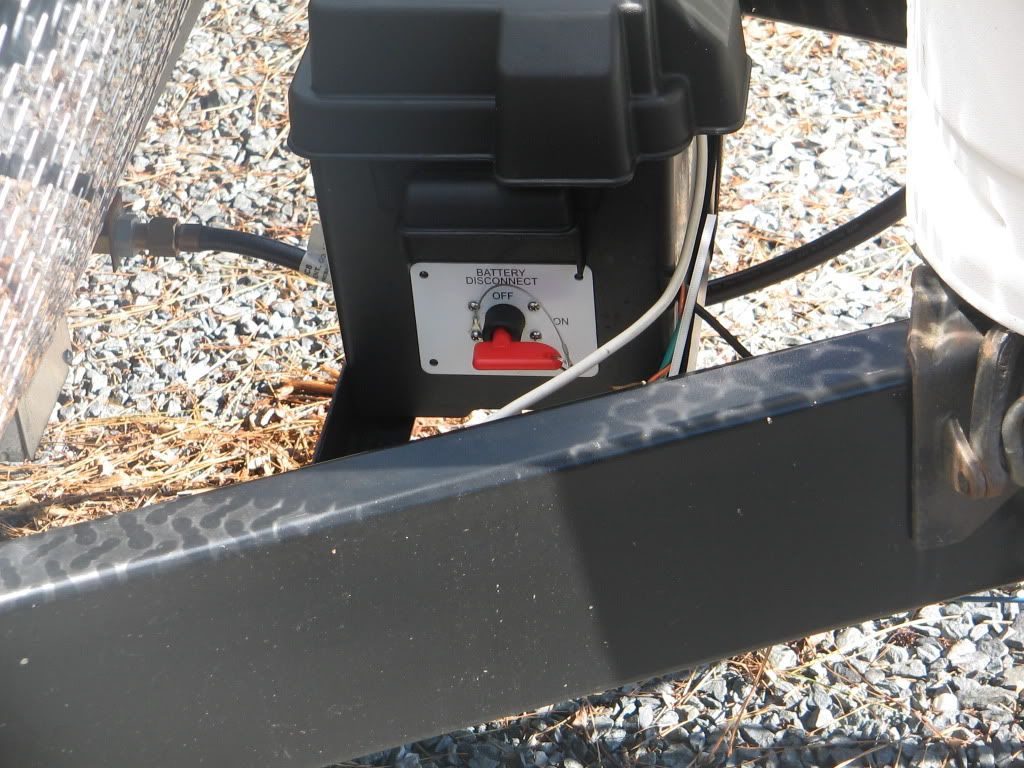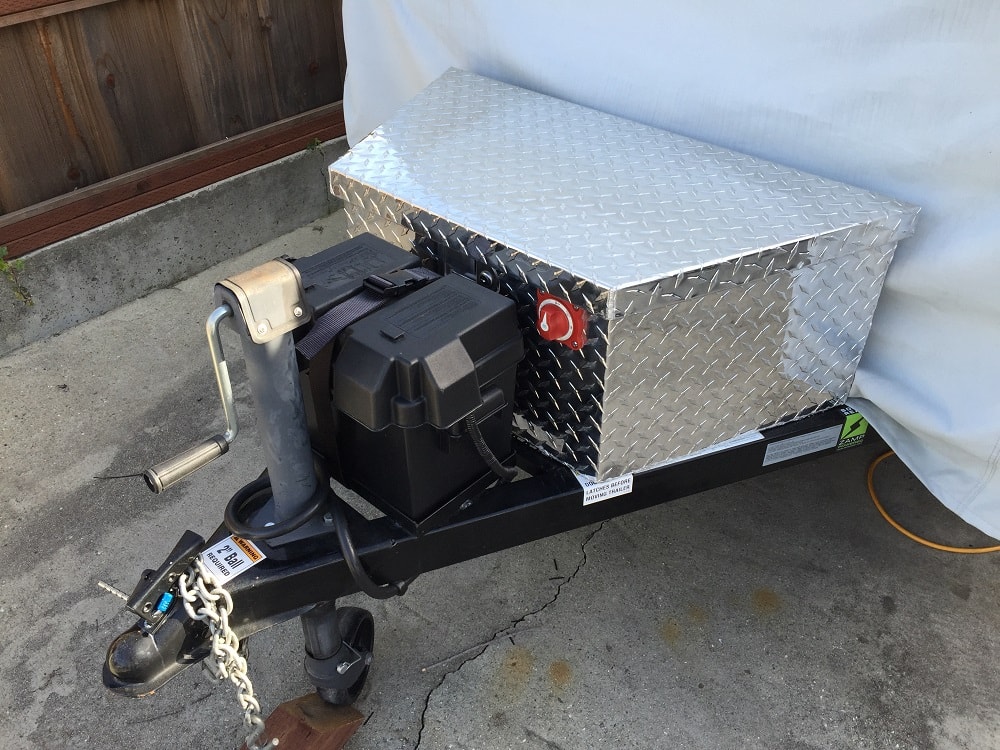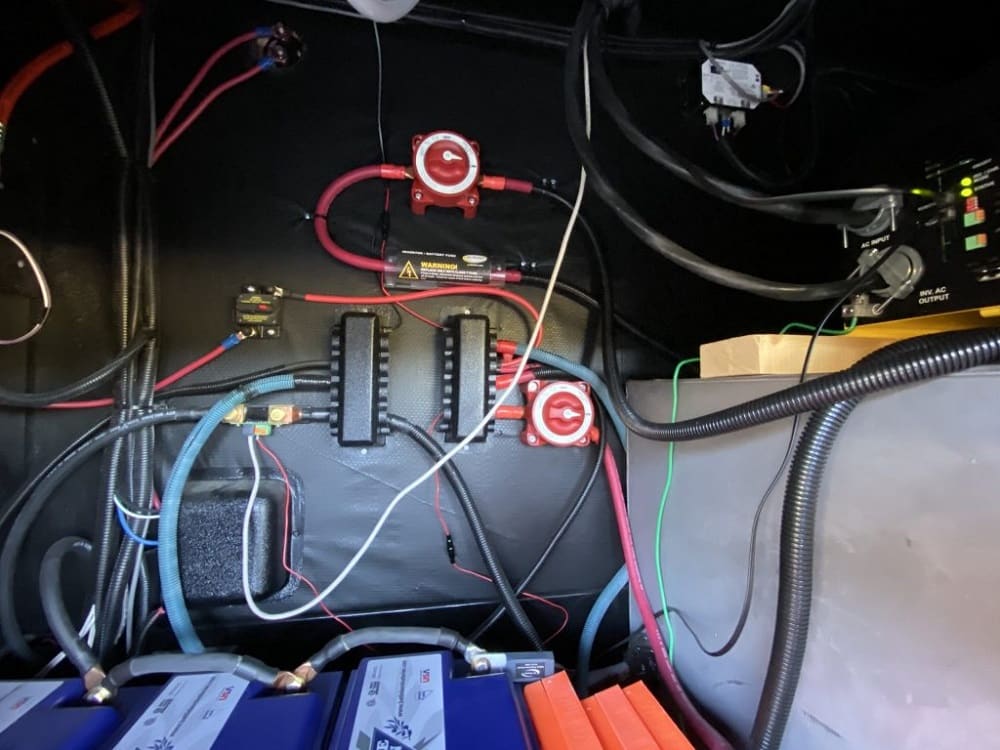A major problem with the maintenance of recreational vehicles (RV) is the batteries. There are all kinds of reasons for having battery troubles, including under/over-charging, but the peskiest one is the self-discharging of the batteries when your RV sits in storage.
The RV battery disconnect switch plays an important role in keeping your trailer’s battery in good condition even when you are using it after months.
Contents
How to Get a Battery Disconnect Switch
Your RV may already have a battery disconnect switch. You should find it easily as there should be labels like “battery” or “battery disconnect” inside the trailer. It’s a red switch with a battery figure drawn on the top panel. In case your RV does not have one, you can opt for an aftermarket RV battery disconnect switch installation.

The switch disconnects the battery’s electrical power or isolates from the house portion of your RV. This prevents parasitic loads such as the stereo, clock, and other appliance circuitry that lead to discharge. Leaving alone without regular charging will damage even the best RV battery.
Do You Need an RV Battery Disconnect Switch?
As the RV battery disconnect switch cuts off your battery from the rest of your unit, and no part of the RV can draw power from the battery, it protects against dangers such as electrical fires and theft. It’s also important to shut off the power as a safety measure when you’re doing maintenance.
Moreover, your appliances drain your batteries slowly even in an unused state, which can add up over time. Your motorhome battery disconnect switch preserves the batteries from such draining and helps them last longer.
Complete power shutdown is necessary when you do repairs or other work on your RV. But a 12 volt battery disconnect switch saves you the hassle. Instead of removing the battery, you can just disconnect the switch.
When your RV is in storage for a long time and you have accidentally left a light on in a compartment or anything inside, your house batteries do not get drained with the RV battery disconnect switch on. These are just a few of many good reasons for installing the switch.

How the Battery Disconnect Function Works
An RV relies on two separate electrical systems:
- A 12-volt Direct Current (DC), and
- A120-volt Alternating Current (AC)
12-volt DC is powered by one or more batteries. It powers the refrigerator, furnace, water pump, along with several other things. The 120-volt AC is powered by an electrical hookup plug of your RV or an RV generator. It provides electricity for heavy-use items like kitchen appliances, TV, and other large electrical appliances.
If plugged into any power source, such as a campground RV electrical pedestal, the 12-volt battery automatically charges. When you’re not plugged in, while boondocking or dry camping for instance, your batteries can power anything that runs off 12-volt. Adding an inverter on top will convert the 12-volt battery’s direct current to a 120-volt alternating current, enabling you to power appliances that need 120 volts and to use your vehicle’s electrical outlets. Tracking the discharge time is important, since your RV’s 12-volt system will eventually run out like all batteries and need recharging.
Related: Does RV Battery Charge When Plugged in?
Advantages of Battery Disconnect Switches
When you are back home and the RV is left idle or is in storage, you may think the battery is in complete rest. But as mentioned earlier, there are parasitic loads that keep feeding off your battery, such as the stereo and security-related devices. You don’t really need them running when the unit will stay for a week or month in your garage.
By leaving the RV battery connection on, you let power draw out of your battery. Keep it a few weeks and you may find it dead the next time going for a new camping trip. The battery also damages itself from operating at low voltage.
After unloading and cleaning following a trip, simply turn the RV battery disconnect switch on. This will leave the battery in the same state of charge in which you leave it while activating the disconnect switch. You are likely to have enough charge when starting your next move because the RV batteries were being charged on your drive back home on the previous trip if all the electric lines in your RV were set up properly.
As the disconnect switch also prevents the battery from receiving any power, don’t forget to keep the battery disconnector off when you are driving to the campsite or when you are already in the campsite, so that your RV battery can power up the different appliances or devices and also receive power for charging itself. This will make your motorhome good to go when boondocking.
Precautions When Using an RV Battery Disconnect Switch
There are different types of disconnect switches available in the market. Make sure to do the proper research when choosing one for your particular vehicle. Plus, carefully follow the instructions on using them.
During the installation of the switch, check and double-check its connection to the correct terminals. Otherwise, there is a high risk to your safety besides the RV battery disconnect switch not working.

Do not keep the disconnect switch turned on when your RV is connected to shore power. Keeping your batteries connected to the unit will charge it well for use when you unplug the AC system.
Even after ensuring proper installations, your disconnect switch may not function. There can be many reasons for it. A drained battery at the time of activating the battery isolation is a valid one. In that case, your RV may not turn on even with the disconnect switch off. You will need to recharge the battery before you can move.
Has the battery had sufficient charge before turning on the disconnector? If yes, contact your RV servicing center to find out the problem and take necessary measures.

LotFancy switch was easy to install. I mounted it on the side of the battery box. I had to cut down the bolts so they wouldn’t stick too far into the box and interfere with the battery. I disconnected the red wire from the positive (+) battery post and attached it to one of the switch ports. I purchased (Battery Cables – LotFancy 8 AWG 24 Inches Power Inverter Cables for Car Marine Solar ATV Lawn Mower Motorcycle, 3/8-Inch Lugs (Positive and Negative)) and used the red cable to connect the other switch post to my positive (+) post on my battery. I didn’t use the black cable that came with it. Works great.
After unloading and cleaning following a trip, simply turn the RV battery disconnect switch on. This will leave the battery in the same state of charge in which you leave it while activating the disconnect switch. You are likely to have enough charge when starting your next move because the RV batteries were being charged on your drive back home on the previous trip if all the electric lines in your RV were set up properly.